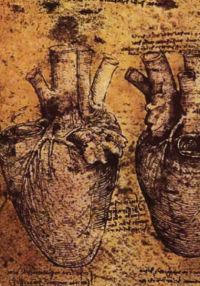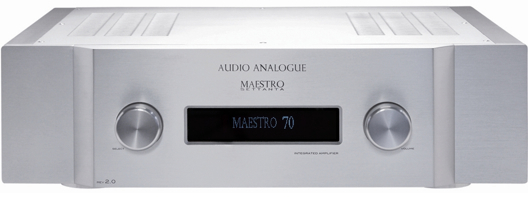Audio Analogue
Hand made in Italy, the Audio Analogue range of amplifiers and source components offer fantastic sound, beautiful build quality and surprising value. It was the association with Sonus faber that originally led us to Audio Analogue - it seemed logical that Italian amps and CD players might go nicely with Italian speakers. But we quickly realized that the reason they made Sonus fabers work so well was not some strange synergy born of a diet of red wine and pasta - it's just that the Audio Analogue amps were a lot better than anything else we'd been listening to. Including our previous NZ made ranges.

This then prompted us to dig further - we were first seduced by the Puccini Amplifier - then completely floored by the new Maestro Settanta Rev2. We even went a bit crazy with the huge Class A integrated which was simply the best sounding amplifier we'd ever had through the shop by a good margin
One of the fun things about running a specialist hifi shop is that you get to listen to a lot of different components in a lot of different combinations. Yet every time we fire up an Audio Analogue amplifier and its matching CD player we almost have to wonder why we bother trying to sell anything else. If there are two qualities that define Audio Analogue it's character and syngery. Each model of amplifier has it's own distinctive personality and this has been perfectly matched by the accompanying CD player model. As much as we like the idea of separate DACs and computer audio, the sound quality produced by any of the Audio Analogue CD player more than stands up. And in combination with its matching amplifier the sum is very positively greater than the parts.
Audio Analogue have never stood still. The introduction of 'Rev2' versions has delivered real improvements and the reliability of all the units we've sold has proved exemplary. Now with the new entry level Armonia range Audio Analogue are even more affordable and offer you something undeniably special - genuinely Italian hand made components with style, innovative ideas and engaging sound quality. For no more (and often less) than mass market products.
Take a tour of the Audio Analogue factory

New Crescendo Integrated Amplifier NZ$ $1,300
Sweetness and Light
From the very first moment you listen to the new Audio Analogue Crescendo, you'll realize this this a very special integrated amplifier. Powerful yet sweet sounding, open and amazingly detailed. It's obvious that the designers have sound quality as their foremost goal - while plenty of manufacturers would like you to think this is the way they operate, the reality is that for many entry level products what you really get is just a branded product with all the goodness hollowed out. With Audio Analogue the opposite applies - you get more than you expect - this has always been what has sold it to us and why we've been enjoying their amps at home for the last few years. Two on special available, one black and one silver.
If you dig into the Crescendo design you find some really nice touches. Have you ever noticed that in just about every system the volume seems to come up differently? Sometimes nothing seems to happen for half a turn of the volume control then suddenly it's all on. Or everything seems to be in the first third? The Crescendo has a series of user settings that allow you to tailor it's volume control to match the way your speakers work so you can have a nice smooth progression and enjoy fine adjustments at the level you most often listen at. Internally there is a nice big toroidal transformer that we all agree is a good thing for any amp to have, but the actual music making circuitry is rather special. The Crescendo is what is known in geek-speak as a 'gainclone'. Rather than using the conventional bank of output transistors Audio Analogue have utilized a new type of IC that has some nice properties including excellent power supply rejection ratio, fast response, accurate bias current, over-temperature protection and short circuit protection. These ICs also allow a dramatic simplification of amplifier design meaning less parts, shorter signal paths and the very real benefit of better sound for less. This is what we like!
All this would mean little if the Crescendo didn't sound as good as it does - if there is one word that best describes what we hear it's 'sweet'. This is consistent with many different speakers - the Crescendo has the ability to to drive a wide range of loads and can really fly into 4 ohms, but it's always composed. This is not to say boring - with the sweetness there is an uncanny ability to deliver fine detail - you literally hear things you never have before on recordings that you might have thought you knew like the back of your hand.
Feature-wise the Crescendo strikes a happy balance between utility and flexibility - there is a user selectable HT bypass for integration in surround sound systems, an excellent headphone section, front MP3 player input and remote control.
Surround the Crescendo with similarly well thought out sources and speakers and you'll have a very, very good system. Analogue of Digital, the Crescendo treats sources evenhandedly and there is no reason why you shouldn't enjoy the best of both worlds with it - we certainly have the options.ust as the Crescendo amplifier oozes character, the matching CD player does likewise. Put them together and the magic produced is far more than the sum of the parts. Audio Analogue are masters of synergy - it's obvious as soon as you listen that while each piece is individually special, and the combination that really shows you what the best of Italian audio is all about.
Here's a little review for you to read on the Crescendo components.

Puccini Settanta Revision 2 integrated amplifer $3000
The original Puccini Integrated was Audio Analogue's very first product and immediately put them on the audiophile map. Since then the concept has been continually upgraded and refined with todays version being by far the most accomplished. The character of the Puccini is clearly defined - tremendously agile and revealing, it really is the racehorse of the range. The latest Rev2 iteration adds subtlety and depth to the earlier Settanta, making the Puccini a compelling proposition for any serious music lover. While only rated at 70 watts, the Puccini uses its dynamic capabilities to really fly along and gives the impression of being rather more powerful than many supposedly higher rated products.
While the Crescendo amp could happily be paired with almost any speakers, the Puccini really demands a speaker capable of making the most of drive it provides. Examples such as the better Sonus faber and Image models show just what the Puccini is all about - give it a serious full range speaker and you'll be rewarded with masses of detail and control. Likewise there is an assumption that you have worthwhile sources - the more information you can throw at the Puccini, the more it will do for you. For real analogue enthusiasts you'll be pleased to find out that the phono stage in the Puccini is exceptional - as good as or better than many outboard models.

Maestro Settanta Revision 2 integrated amplifer $5500
Depth and Control
It's highly likely that your first experience of the new Audio Analogue Maestro will be a complete revelation. Very few amplifiers can deliver the scale, depth and architectural solidity of the Maestro. Certainly nothing else we've heard at this price level even hints at it. Without suggesting that the Puccini is lacking in any way, the Maestro takes its essence then dramatically expands upon it in every area. It is rich and warm enough to rival serious tube designs, but has rock solid control of bass that will have you wondering how they manage to produce so much power from a single chassis. Short of the new Pure Audio amplifiers, we've heard nothing else that gets more out of our own Sonus fabers. This alone makes it our amplifier of choice.
Like the aforementioned Pure Audio, Audio Analogue understand that power ratings have very little to do with sound quality or the volume of sound an amplifier will produce. The Maestro has the same 'Settanta' (Seventy) suffix as the Puccini but the reality is that it is vastly more muscular and will deliver a bigger more solid sound than many supposedly powerful contenders. But the Maestro is by no means an in-your-face amplifier. The 70 watt power rating allows it to work in the sweet spot that many designers now aim to hit. It is becoming increasingly obvious that excess power is not only expensive but also impacts on musical quality. While a 250 or 300 watt amplifier may seem impressive, once you get over the numbers and listen, they are often opaque and strangely un-involving. Simply put, once you hear what the Maestro can do with 70 watts, you'll wonder why anyone could possibly want more. It's no accident that Audio Analogues penultimate integrated amplifier - the Class A SE is in fact rated at 50 watts!
While music comes first with the Maestro, plenty has gone into the features and flexibility of this amplifier. Balanced inputs, a highly refined phono stage, user selectable home cinema bypass and the best mains cable we've ever seen as standard equipment. Again this shows how committed Audio Analogue is to sound quality - they strongly recommend you experiment with mains phase (which the cable allows you to easily do) as this makes a significant contribution to performance.
In a perfect world you'll be able to add the matching CD player to whichever amplifier you consider best matches your aspirations. But we do understand if you want to use other sources - other disc players, DACs and especially turntables. We have spent many pleasurable hours listening to all the models both at work and home. This has given us a very good idea as to what is going to work very well with each model. On the speaker front, the pairing with Sonus faber is an obvious place to start but don't let this limit you. Audio Analogue is all about music in all its forms and styles and is equally at home with Nick Cave as it is with Classical. And with any speaker system, if you put better sound in, you'll get better sound out.
If at all possible, come and see us for a demonstration of the Audio Analogue models - but if you are distant, don't let that stand in the way of getting the best amplifier - talk to us and we'll both establish which model is best for you and find a way to make it happen.
The Terrace Houses
217 Stuart Street
Dunedin 9016
New Zealand
NZ Toll Free
Phone
Cell Phone
Mail
0800 909 101
(+64) 03 4790 444
(+64) 021 963 321
info@totallywired.co.nz
Direct Contact
John Ransley and Carolyn Guytonbeck are the principals behind Totally Wired. It’s our own business and we take pride in building something worthwhile.
If you want to contact us directly per mail:
Related links

